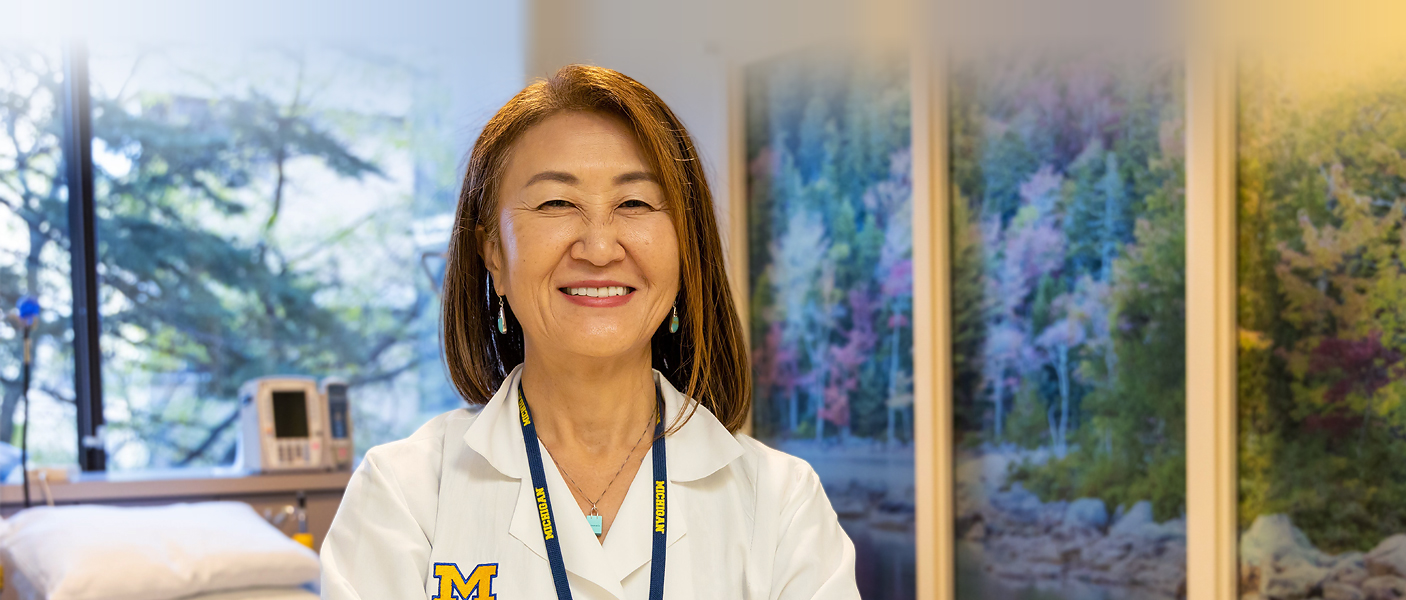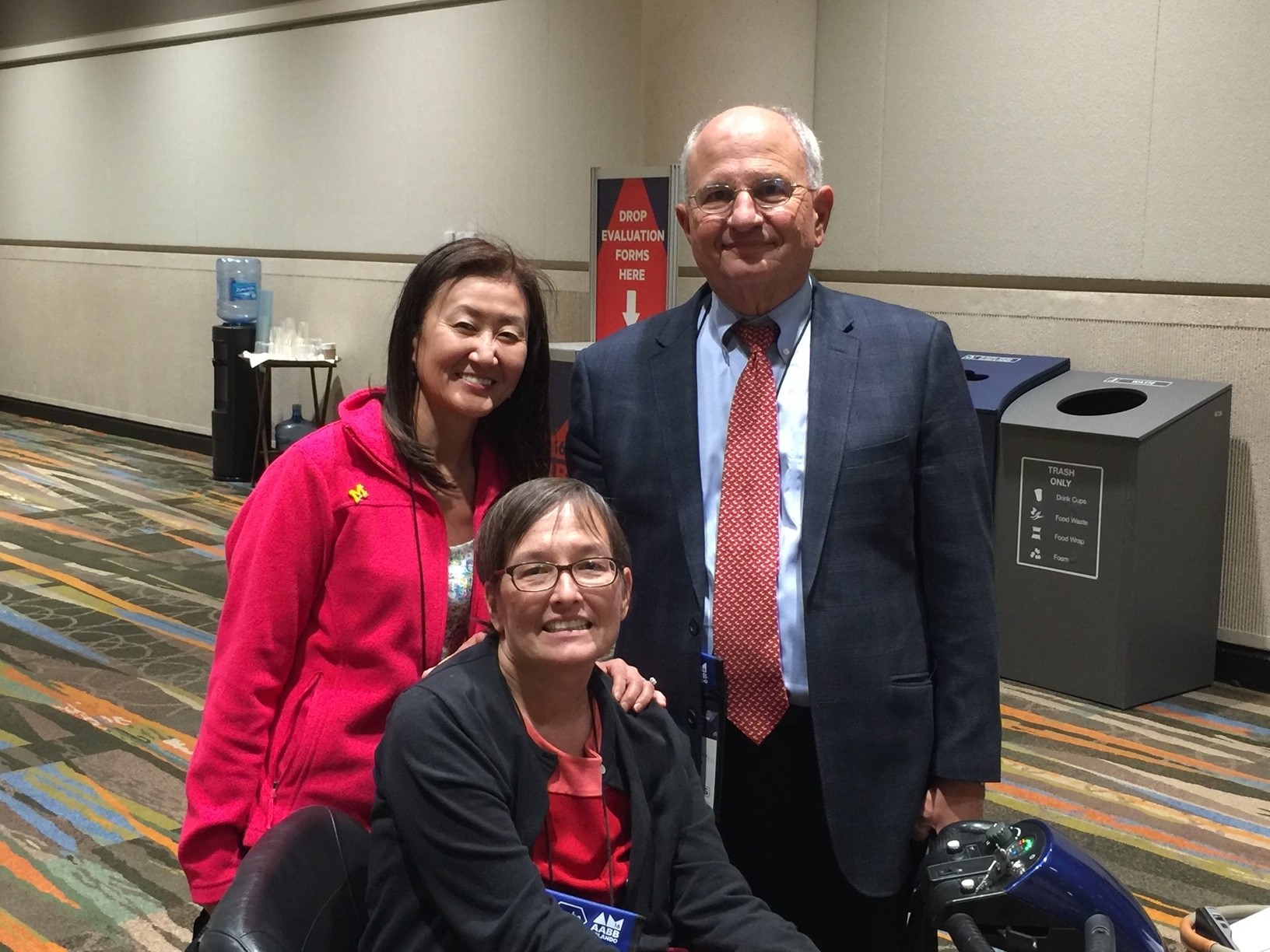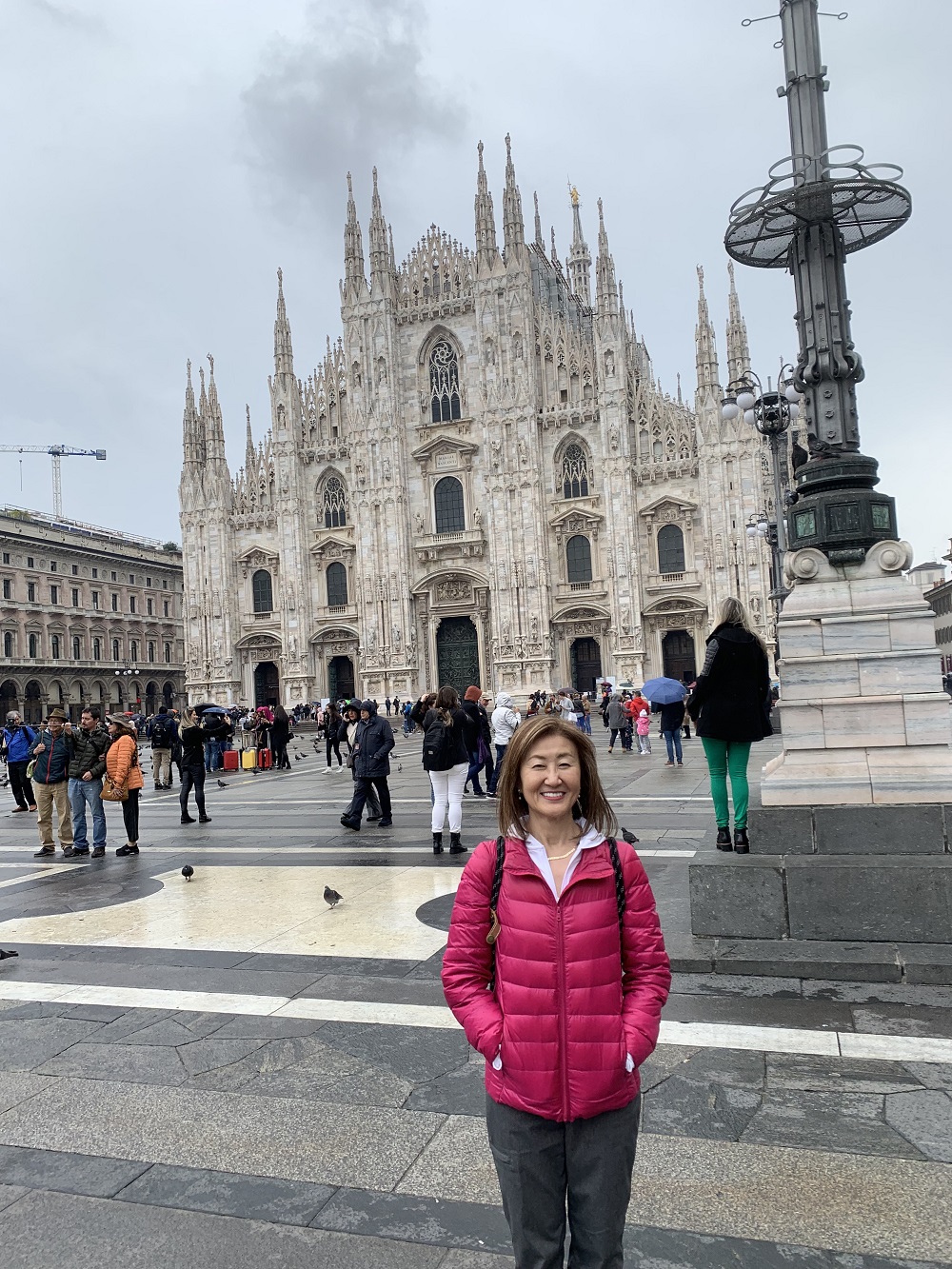

The role of Transfusion Medicine has been expanding in recent years. Its role is not only management of blood supply, but also providing treatments by apheresis procedures and more recently, cell therapies. Each year, about 60,000 blood components are transfused into patients at Michigan Medicine. These components originate from individuals who donate blood at blood centers. Whole blood used to be the primary method of collection and the blood was separated into components: red blood cells, platelets, plasma, cryoprecipitate, and sometimes white blood cells. In recent years, however, each component is often collected from donors by itself using apheresis devices. Other newer developments include pathogen-reduced blood products, different preservatives used to increase storage time of platelets, and cold temperature stored platelets or freeze-dried platelets have been investigated. Applicable diseases for apheresis have been rapidly expanding and evidence-based recommendations by American Society for apheresis have been updated every 3 years. Cell therapy is a major advancement in medicine and the transfusion medicine section plays important roles in cell therapy by collecting cells, managing or manipulating target cells, and sometimes infusing these cells into patients. We recently sat down with Dr. Chisa Yamada to learn more about her background and her role within this unit.
Yamada was born in Japan and graduated from the Tokyo Women’s Medical University in 1986. This was followed by an Ophthalmology residency training program and Fellowship at Keio University. Upon completion of her training, she worked as an Ophthalmologist at Nippon Kokan Hospital, becoming Chair of Ophthalmology (1994-1998). During her tenure at Nippon Kokan Hospital, Yamada would see upwards of 50 patients per day on a walk-in basis, since in Japan, patients do not schedule appointments. By 1998, she had completed about 800 cataract surgeries and multiple other surgeries, and she wanted to move into more clinical research. Since this was not an option for her in Japan, she relocated to the United States. “At the beginning, I thought I would just do research, but I realized that I cannot touch the patients’ specimens for clinical research in the United States without a medical license. So, I applied to the Pathology Department,” related Yamada. She chose pathology as it has contact with all of the departments in medicine. “In pathology, I got to know the bigger picture, beyond just eye diseases. t has the greatest exposure to all diseases and offers the best opportunity to do research. However, during my residency program, I realized that I missed seeing patients, so I chose transfusion medicine as my final career. The work in the blood bank is very logical to me; and I especially like apheresis, probably because of my clinical background. We treat patients – but not 50 per day! I have up to 20 patients per day.”
 Yamada completed her Pathology residency training and transfusion medicine fellowship program at Johns Hopkins University and Hospital. It was there that she met Dr. Paul Ness and Dr. Karen King, two mentors who had the most influence in her career. “Paul Ness was my forever mentor. He was the fellowship program director when I was a fellow at Johns Hopkins. He retired recently, but he taught me everything I needed to know in transfusion medicine; basics of blood banking and apheresis, how to take care of patients, how to conduct research, how to make presentations at meetings, how to write a paper, how to work with other professionals, what I can do in professional organizations, and what is important and what is not important. He is very knowledgeable and has such a big heart. I was a foreign graduate, so I struggled a bit at the beginning of my career in the US, but he accepted me, gave me lots of opportunities, gave me a great education and encouraged me to work hard to have a successful career. Karen King was a fellowship co-director at Hopkins and my dear friend. She was half Japanese and was even more “Japanese” than I, in that she valued harmony and togetherness. She invited all the fellows to her house all the time, so Hopkins’ fellows are all good friends, even if their graduation years are different. She was at the center of my Hopkins friends. She showed me not only how to work as a physician, but also how to find balance between work and private life and how to live in the US. Sadly, she passed away two years ago, and I really miss her. From my experience, I think choosing a fellowship program is very important. The knowledge you gain in your fellowship program becomes the base of your career and stays in your life forever. I want all of our pathology residents to know that and to choose their fellowship programs carefully. Also, I’m trying to provide the same great experience that I had in my fellowship program to the transfusion medicine fellows here at the University of Michigan.”
Yamada completed her Pathology residency training and transfusion medicine fellowship program at Johns Hopkins University and Hospital. It was there that she met Dr. Paul Ness and Dr. Karen King, two mentors who had the most influence in her career. “Paul Ness was my forever mentor. He was the fellowship program director when I was a fellow at Johns Hopkins. He retired recently, but he taught me everything I needed to know in transfusion medicine; basics of blood banking and apheresis, how to take care of patients, how to conduct research, how to make presentations at meetings, how to write a paper, how to work with other professionals, what I can do in professional organizations, and what is important and what is not important. He is very knowledgeable and has such a big heart. I was a foreign graduate, so I struggled a bit at the beginning of my career in the US, but he accepted me, gave me lots of opportunities, gave me a great education and encouraged me to work hard to have a successful career. Karen King was a fellowship co-director at Hopkins and my dear friend. She was half Japanese and was even more “Japanese” than I, in that she valued harmony and togetherness. She invited all the fellows to her house all the time, so Hopkins’ fellows are all good friends, even if their graduation years are different. She was at the center of my Hopkins friends. She showed me not only how to work as a physician, but also how to find balance between work and private life and how to live in the US. Sadly, she passed away two years ago, and I really miss her. From my experience, I think choosing a fellowship program is very important. The knowledge you gain in your fellowship program becomes the base of your career and stays in your life forever. I want all of our pathology residents to know that and to choose their fellowship programs carefully. Also, I’m trying to provide the same great experience that I had in my fellowship program to the transfusion medicine fellows here at the University of Michigan.”
Upon completion of her fellowship training, Yamada spent one year as faculty at Johns Hopkins before moving to the University of California Irvine. When she could not find opportunities for research there, she chose to move to the University of Michigan, which is a well-known facility for advanced research. “I knew that Michigan was a very academic hospital with a lot of research going on, so I could do research. I accepted a position here in 2009 and have worked here since.”
Currently at University of Michigan, Yamada is an Associate Professor of Pathology, Medical Director of the Apheresis Procedure Unit, Associate Medical Director of Transfusion Medicine, and Associate Director of the Transfusion Medicine Fellowship Program. As the Apheresis Procedure Unit director, Yamada works closely with apheresis nurses, the supervisor, residents/fellows and for the patients. She is responsible for ensuring laboratory standard operating procedures are maintained, deals with any procedure-related issues, works with patients, and engages in trainee education. The blood bank has two residents that rotate through each day and sometimes a fellow as well. In addition to the clinical care aspects of the position, fellows are afforded extra attention. They are offered opportunities to present at local, national, and international meetings. “We teach them how to make a presentation, how to write a paper, help them identify research projects, and support them as they learn.” Yamada is a past president of the Michigan Association
of Blood Banks, and currently serves in multiple organizations including the Advancement of Blood & Biotherapies, American Society for Apheresis, and the International Society for Apheresis. In addition, “I am encouraging and helping residents, fellows, nurses, and technologists to give presentations at meetings. I am a foreign medical graduate, so I have many international colleagues and friends. I take advantage of that and have been working to build connections between the organizations internationally. I have been involved with organizing annual meetings for ASFA and ISFA and have invited many international speakers and I have been invited to give presentations for those meetings as well. As a member of the Michigan faculty, I am proud of having University of Michigan’s name out at all those meetings.”
with organizing annual meetings for ASFA and ISFA and have invited many international speakers and I have been invited to give presentations for those meetings as well. As a member of the Michigan faculty, I am proud of having University of Michigan’s name out at all those meetings.”
For individuals who are interested in potentially pursuing a career in Transfusion Medicine, Yamada emphasized the uniqueness of this field in Pathology. “Many pathology residents don’t like to see patients. Transfusion medicine, especially apheresis services, require us to see a lot of patients and it is very clinically oriented. They need to like to see patients.” This subspeciality is very specialized and narrowly focused, in-depth knowledge is required, but a broad knowledge of all diseases is also needed, spanning other subspecialities in pathology. “We are dealing with lots of diseases, many of which are rare diseases. This is a great career for someone who is interested in continually learning and expanding their knowledge, and at the same time, who enjoys interacting with people and patients.” Transfusion medicine is an area that has a good balance in the workload: academics, patient care, and laboratory work. It is also a growing field. “You get a sense that you are making a difference for the patients and that you are contributing to society. The biggest difference between Transfusion Medicine and other subspecialities in Pathology is that you can get responses from the patients directly in Transfusion Medicine.”
Management of people is one of Yamada’s greatest challenges in her role. “As the director of the apheresis unit, it is my responsibility
to protect the safety of not only patients but also nurses, residents, and fellows who are working in the apheresis unit. It is my job to educate them, listen to them, encourage them, and try to make a comfortable work environment for them as well. The work requires very specific methodologies and skills. It takes six months for new apheresis staff to be able to work independently. That is a long time, and I encourage them and help them develop pride in doing a great job. They are very good people and are very enthusiastic for patient care. I am grateful to have them in the apheresis unit.” On the flip side, her greatest joy is also related to working with people. “My biggest triumph is knowing and working with renowned people in transfusion medicine. I have been working here for more than 10 years now and more than 15 years in Transfusion medicine. I work with many organizations too, so I know people and people know me worldwide. These great networks are my biggest triumph!”
time, and I encourage them and help them develop pride in doing a great job. They are very good people and are very enthusiastic for patient care. I am grateful to have them in the apheresis unit.” On the flip side, her greatest joy is also related to working with people. “My biggest triumph is knowing and working with renowned people in transfusion medicine. I have been working here for more than 10 years now and more than 15 years in Transfusion medicine. I work with many organizations too, so I know people and people know me worldwide. These great networks are my biggest triumph!”
In her free time, Yamada enjoys traveling. “I visited more than 20 countries when I was younger, and visit my family in Japan every
year. COVID-19 still prevents me from freely traveling internationally due to the many restrictions, but I hope this is going to be over soon. Also, my husband likes camping. We have an RV in a park in the Manistee area where we spend a lot of time in the summer. When we retire, we are planning to get a bigger RV and travel many places in the US.”